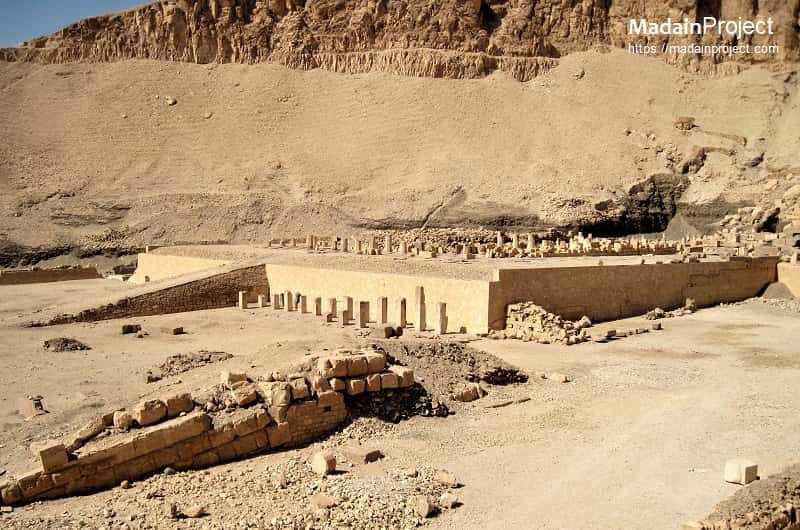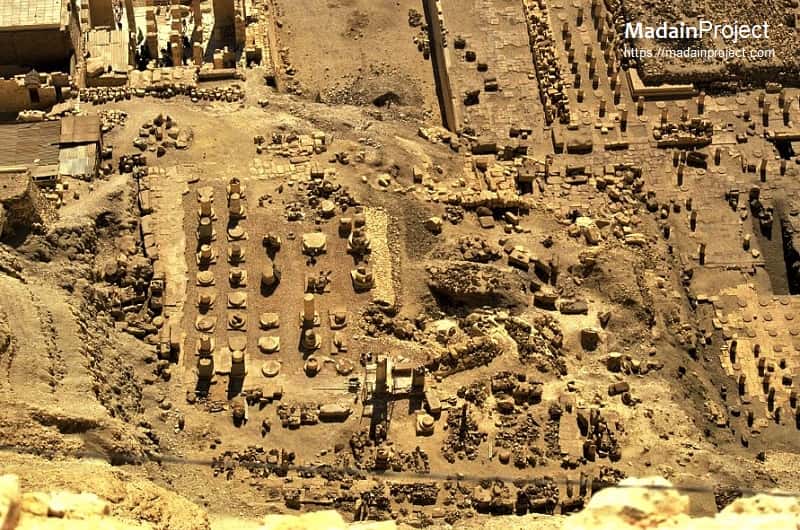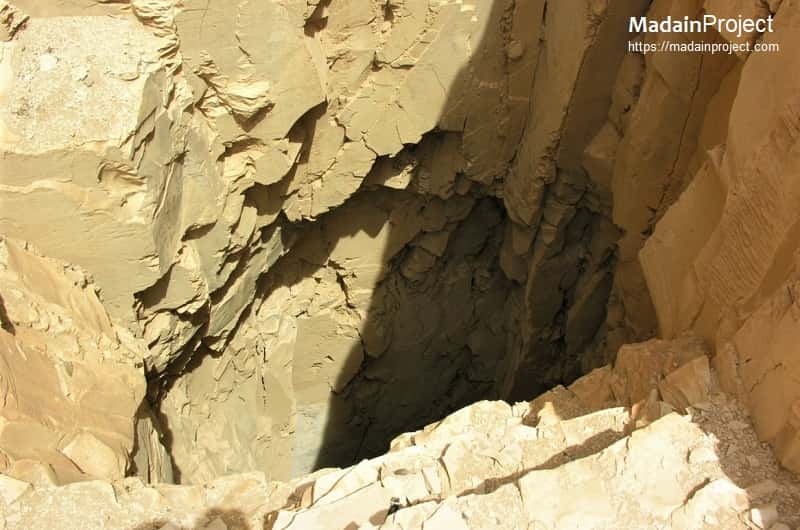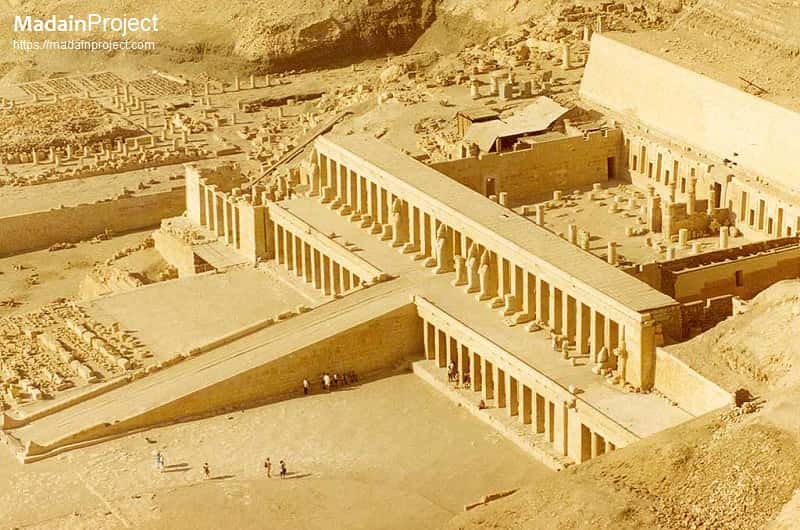The Ancient Deir el-Bahari (الدير البحري) al-Dayr al-Baḥrī "the Monastery of the North" is a complex of mortuary temples and tombs located on the west bank of the Nile, opposite the city of Luxor, Egypt. This is a part of the Theban Necropolis. The first monument built at the site was the mortuary temple of Mentuhotep II of the Eleventh Dynasty. It was constructed during the fifteenth century BCE. During the Eighteenth Dynasty, Amenhotep I and Hatshepsut also built extensively at the site.
It is made up of a bay in the cliffs on the west bank of the Nile River east of the Valley of the Kings. Its name (Arabic for "northern monastery") refers to a Coptic Christian monastery built there in the seventh century CE.
Of the three ancient Egyptian structures on the site, one, the funerary temple of King Mentuhotep II (built circa 1970 BCE), has lost much of its superstructure. The second, the terraced temple of Queen Hatshepsut (built circa 1470 BCE), was uncovered (1894–96 CE) beneath the monastery ruins and subsequently underwent partial restoration. A third temple, built by Thutmose III about 1435 BCE was discovered by a Polish archaeological mission, above and between the two earlier temples of Hatshepsut and Mentuhotep.
Deir el-Bahari has roots dating back to the Middle Kingdom period (around 2055-1650 BCE), but it gained prominence during the New Kingdom era (16th - 11th centuries BCE). The site was considered sacred due to its proximity to the ancient city of Thebes and the Valley of the Kings, which housed the tombs of numerous pharaohs. Its location along the Nile River made it strategically important for religious and funerary practices.
The most significant structure at Deir el-Bahari is the Mortuary Temple of Hatshepsut, built during the 15th century BCE. Queen Hatshepsut, one of the few female pharaohs of ancient Egypt, commissioned the temple to honor the god Amun and herself. Designed by the architect Senenmut, the temple is characterized by its terraced structure, with colonnaded halls, statues, and reliefs depicting the queen's achievements.
After the New Kingdom period, Deir el-Bahari gradually fell into disuse and was abandoned. Over time, the site was covered by debris and sand, and its historical significance was forgotten. It wasn't until the 19th century that the temple complex was rediscovered by European archaeologists, notably by the French Egyptologist Jean-François Champollion. Excavations and restoration work revealed the grandeur of Hatshepsut's temple and its cultural importance in ancient Egyptian society.

It is a significant archaeological site that sheds light on the early Middle Kingdom period of ancient Egypt. The temple, with its unique design featuring colonnaded halls and courtyards, represents an architectural transition from the preceding Old Kingdom style to the grandeur of the New Kingdom temples.Read More

Constructed during the 15th century BCE, this temple was dedicated to the warrior pharaoh Thutmose III, one of Egypt's greatest military leaders. It was destroyed, probably by an earthquake, at the beginning of the Twenty-first Dynasty. Fragments of walls covered with relief decoration were preserved. Read More

Tomb DB320, also known as the "Royal Cache", was discovered in 1881 by the French Egyptologist Gaston Maspero. During the 21st Dynasty, in an effort to protect the royal mummies from looters, priests gathered several mummies from other tombs in the Valley of the Kings and reburied them in Tomb DB320. Read More

Commissioned by Queen Hatshepsut, one of the few female pharaohs in Egypt's history, the temple served as a funerary monument dedicated to both her divine lineage and her achievements during her reign. Constructed during the 15th century BCE, this temple is a remarkable example of ancient Egyptian architecture, nestled against the cliffs of the Theban Mountains. Read More
The entire complex was designed to blend organically with the surrounding landscape and the towering cliffs and was the most striking tomb complex raised in Upper Egypt and the most elaborate created since the Old Kingdom. The building was modeled after the mortuary temple of Mentuhotep II (c. 2061-2010 BCE), the great Theban prince who founded the 11th Dynasty and initiated the Middle Kingdom of Egypt (2040-1782 BCE).
The temple consists of three levels each of which has a colonnade at its far end. On the uppermost level, an open courtyard lies just beyond the portico. Mummiform statues of Hatshepsut as Osiris, the god of the dead, lean against its pillars. The temple’s walls are covered with beautiful painted reliefs depicting temple rituals, religious festivals, and even the transportation of obelisks from the quarry to their destination in Karnak Temple.
Signup for our monthly newsletter / online magazine.
No spam, we promise.